Just so you know exactly what you're seeing later, this is where I made the cut, at the back of the whole thing. Normally, all you see of this thing is the tube that it fits in, and I cut the back wall of this tube off to look inside here.
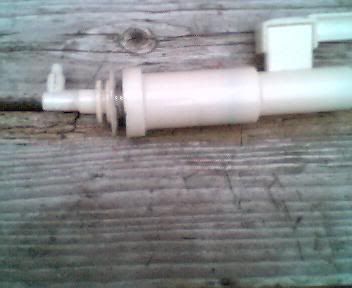
This is the inside of the firing mech in a state of rest. Everything is all bunched together. Note, the back of the outer tube isn't normally shoved up against the disk that holds it all in place, but it has more room to expand now.
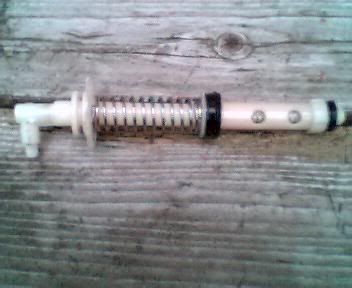
Here is the firing mechanism with the front section extended. That front piece with the two holes in the side actually has a spring in there that tries to push back against the plunger.
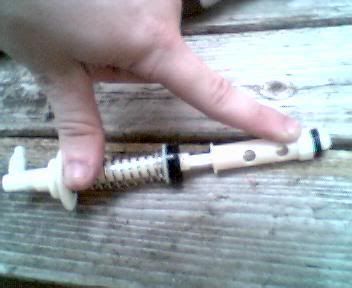
You know that air comes in the back, but the arrow points to where this air actually enters the mechanism: a tiny little hole in the central shaft just after the plunger.
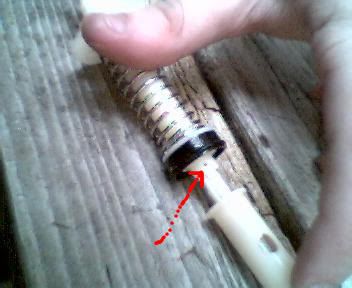
So, now that you've seen it, here's the explanation of the firing sequence. Pic first, then step by step. DL the pic and zoom in if it's still unclear: since these things are mostly cylinders, it's kinda hard to draw, so if it's a lighter version of the same color, that means there's a hole there on one or more sides, but not all the way around. Every color represents a different piece (i.e. everything in black is the "outer tube," everything in red is the "plunger," and everything in blue is the "stopper," and each of those is all one piece). This might not be actual size, but I was pretty meticulous about the scale.
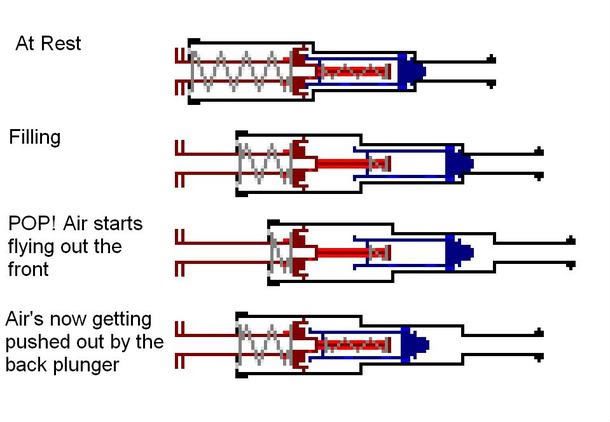
1. At Rest: The springs are spread as far as they can, there is no pressure in the chamber, and the stopper has sealed the front, so air in will not go directly out the barrel. The air starts filling into the middle (out of that little hole in the red piece). The blue piece is flush up against a wall, so the air can only push the red piece (compressing the both springs).
2. Filling: The air has filled as far as it thinks it can go. The smaller spring is compressed as tight as it can. This means if we push the plunger back any farther, it'll take the blue piece with it. But the blue piece is...
3. POP: ...the stopper. The rubber that was sealing the front off just got pulled off the exit. Now the air is free! So it goes rushing out, around the blue piece and out the black.
4. Push: The plunger is no longer held back by the pressure. As the last of it goes out the barrel, both springs extend as fully as possible, advancing the clip and pushing all these internals back into the original position, with the exit plugged, so it can happen again and again.
And that, ladies and gents, is the layman's explanation of the Nerf air-powered rapid-fire mechanism. First post (I've done plenty of mods, but nothing you guys haven't seen, so...).
[Edit: Title change, and reworded the Push phase as per imaseoulman's insights]
Edited by Gas Mask Guy, 12 August 2008 - 01:46 PM.















